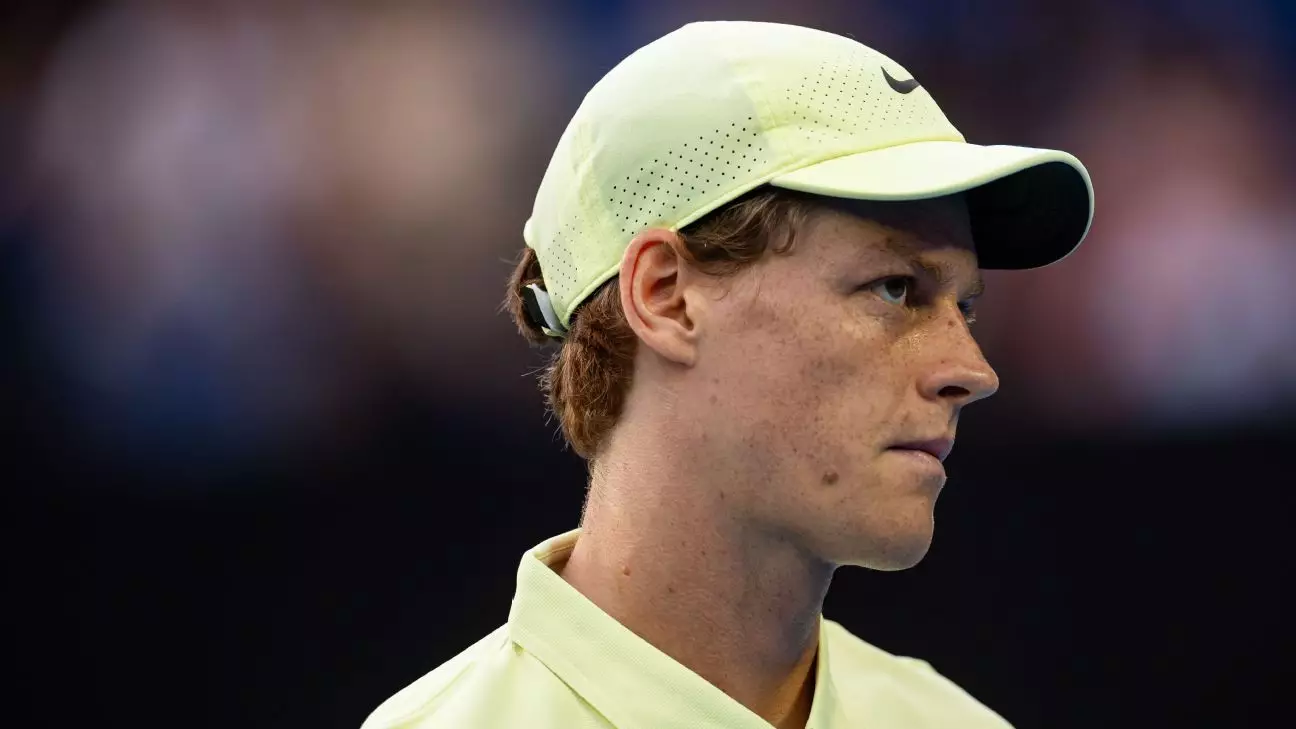Amidst the elegance of Rome, the tennis world is abuzz with the highly anticipated return of Jannik Sinner, following a three-month suspension that had stirred both chaos and curiosity within the sport. The magnitude of this topic transcends mere headlines; it dives deep into the emotional and psychological facets of professional sports, revealing how companionship and rivalries intertwine amid scandals. Sinner’s situation has evoked a spectrum of reactions from fellow players, illuminating not only the complexities of athlete relationships but also the pressures that elite competitors endure.
The unexpected nature of the support Sinner received during his ban highlights the intricacies of camaraderie within tennis. The stark contrast between those who reached out to provide encouragement and those who remained silent speaks volumes about the environment he found himself in. While players like Holger Rune’s mother and Alexander Zverev took the time to voice their support, others who Sinner expected to stand by him conspicuously opted for silence. Such dynamics not only serve to reinforce bonds among certain athletes but also segment players into winners and those on the periphery, creating an atmosphere thick with tension.
The Weight of Exoneration
Sinner’s case raises crucial questions about fairness and integrity in sports. His suspension stemmed from a seemingly innocuous incident involving inadvertent contamination by a banned substance, yet the perceived leniency of the ruling ignited debate over whether this treatment was justified. The settlement with the World Anti-Doping Agency (WADA) allowed him to bypass missing any Grand Slam appearances, a decision that has not gone unnoticed by peers in the locker room. Many have expressed their discontent, believing that the penalties could have been far harsher, reflecting a broader issue regarding consistency in the enforcement of doping regulations within the sport.
This context dramatically changes the fabric of the locker room’s social dynamics. Sinner himself has noted a noticeable shift in how he’s viewed by fellow competitors since the incident, suggesting that even among the world’s elite, perceptions can be forever altered by controversy. His discomfort during events, particularly at the Australian Open, underscores a more significant issue: the lingering shadows cast by reputational crises.
Isolation Behind the Lines
One of the profound impacts of Sinner’s suspension was the isolation he felt while prohibited from attending sporting events to support his friends. The multi-sport realm is often a close-knit community, and the inability to cheer on peers during competitions contributed significantly to his emotional struggle. Sinner’s desire to support friends in cycling and motorsport illustrates a yearning for connection that extended beyond his immediate tennis circle. Such isolation can be devastating for professional athletes, who thrive on camaraderie and mutual support.
As Sinner prepared for his return, he practiced with notable players like Jack Draper and Lorenzo Sonego, showcasing an adaptive approach to his training during his suspension. While he was barred from competition, these practice sessions likely provided him a semblance of normalcy, preventing the total withdrawal that is often the experience of athletes in similar situations.
The Complexity of Coaching Dynamics
As seasoned coach Darren Cahill prepares for his retirement, the eventual transition may profoundly impact Sinner’s development and emotional state. Coaching is not merely a professional relationship; it’s often an emotional journey that requires trust and understanding. Coach Simone Vagnozzi has expressed a desire to take on more responsibility, yet he acknowledges that the challenges of coaching someone at Sinner’s level necessitate a team approach. This sentiment highlights an essential truth in professional sports: the importance of diverse perspectives in shaping an athlete’s career.
Despite the turbulence surrounding his return, Sinner enters the Italian Open with a remarkable 21-match winning streak. However, historical challenges on clay courts weigh on him as he faces Mariano Navone, who managed to defeat his own challengers with evident ease. While Sinner’s journey at the Foro Italico is negligible regarding the superiority of his skill set on red clay, there remains an air of optimism among his coaching team. Their faith in his potential success in Rome speaks to the power of resilience and the determination to overcome perceived disadvantages.
Ultimately, the story of Jannik Sinner is more than a mere comeback narrative. It unfolds as an insightful exploration into the pressures, vulnerabilities, and hidden dynamics that permeate the world of professional sports. As he steps onto the court, his journey continues to inspire and provoke thought about the true essence of competition, support, and redemption—elements intrinsic to any athlete’s path.

